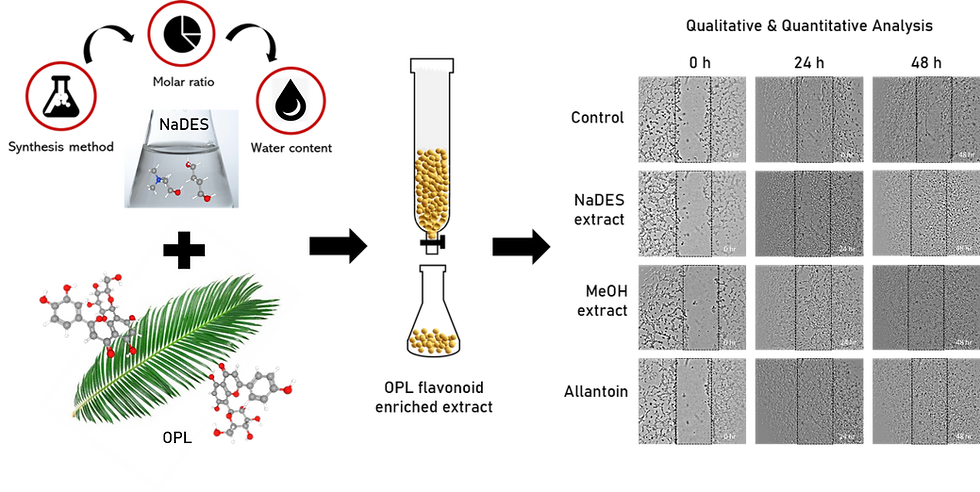Unlocking sustainable way in wound remedy
- Mohamad Shazeli Che Zain
- Feb 17, 2023
- 2 min read
Updated: Oct 7, 2023
Let's join me to celebrate the successful publication of our research in high impact journal Antioxidants. The work involves the development of green solvent in trapping compounds of interest in Malaysian agricultural waste, oil palm leaf for therapeutic use in wound repair. We found the in house developed green solvent is able to extract similar or higher efficiency than conventional alcoholic organic solvent. Hope the research has provided some insight on the potential application of green solvent as extraction media. Let's save the world by creating a better place for our future generation.

Abstract
Huge quantities of oil palm (Elaeis guineensis Jacq.) leaves (OPL) are generated as agricultural biomass from oil palm plantations. OPL are known to contain significant amounts of flavonoids. For maximal exploitation of these valuable antioxidant compounds, an innovative and sustainable extraction method employing natural deep eutectic solvents (NaDES) combined with ultrasonic assisted extraction was developed. Various NaDES composed of choline chloride as the hydrogen bond donor (HBD) and 1,2 propanediol (PD), 1,4 butanediol (BD), glycerol (GLY), glucose (GLU), maltose (MAL), and lactic acid (LA) as the hydrogen bond acceptor (HBA) were synthesized. The influence of these compositions, the methods of their synthesis, molar ratios, and water contents on their capacity to extract flavonoids from OPL was evaluated. Based on the results, it was found that methods which incorporate a heating step produced NaDES with the best capacity to extract OPL flavonoids. These thermal methods combined with molar ratios of 1:3 or 1:4 and water contents of 17 to 50% were found to be the optimal conditions for preparing NaDES, specifically when applied to the PD, BD, and GLY NaDES. Subsequently, UHPLC-UV/PDA-MS/MS analysis revealed NaDES extracts recovered by macroporous adsorption resin XAD7HP were able to optimally extract at least twelve luteolin and apigenin derivatives in OPL NaDES extracts prepared from glycerol and 1,4-butanediol demonstrated better and comparable efficiency as aqueous methanol in extracting flavonoids from OPL. The in vitro studies of antioxidant and wound healing properties supported these findings by exhibiting good free radical scavenging, cell proliferation, and migration activities. Additionally, the NaDES extracts also showed non-cytotoxicity effects at 1000 µg/mL and below on 3T3 fibroblast cells. Results of the study showed that NaDES could be a promising eco-friendly green solvent to extract bioactive OPL flavonoids that have great potential for applications as wound healing agents.
Full length article: https://doi.org/10.3390/antiox10111802
Comments